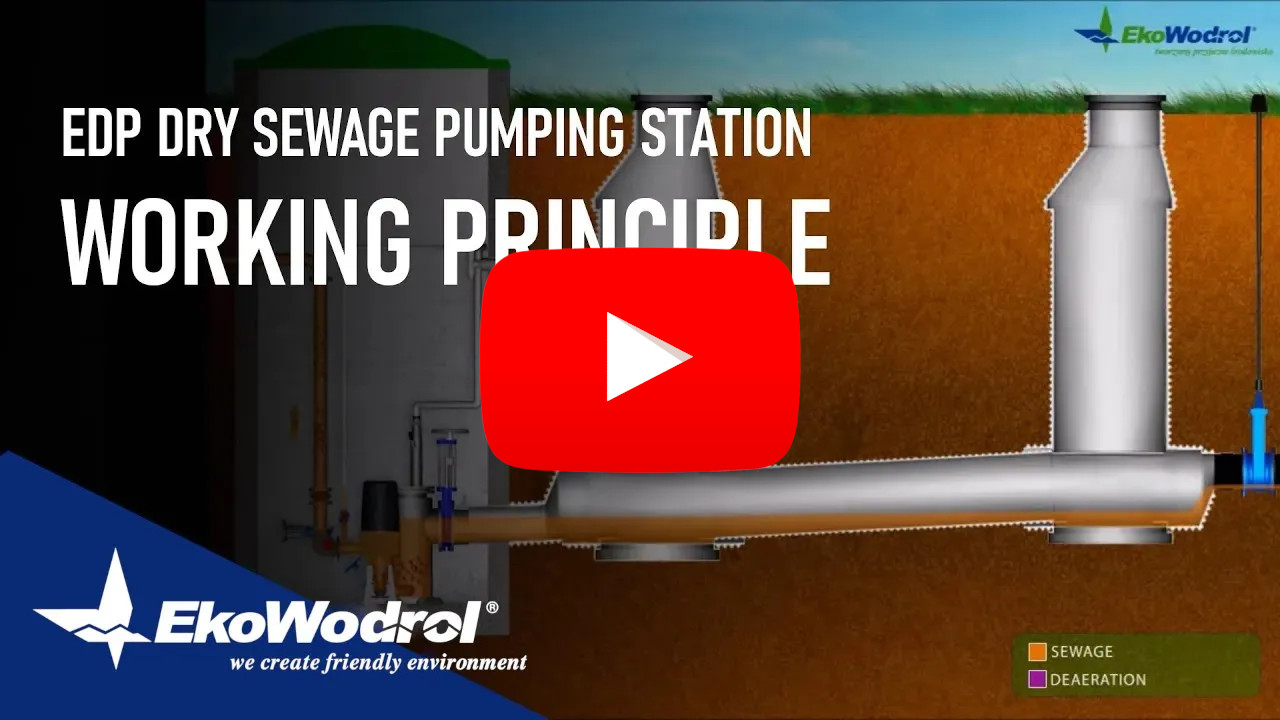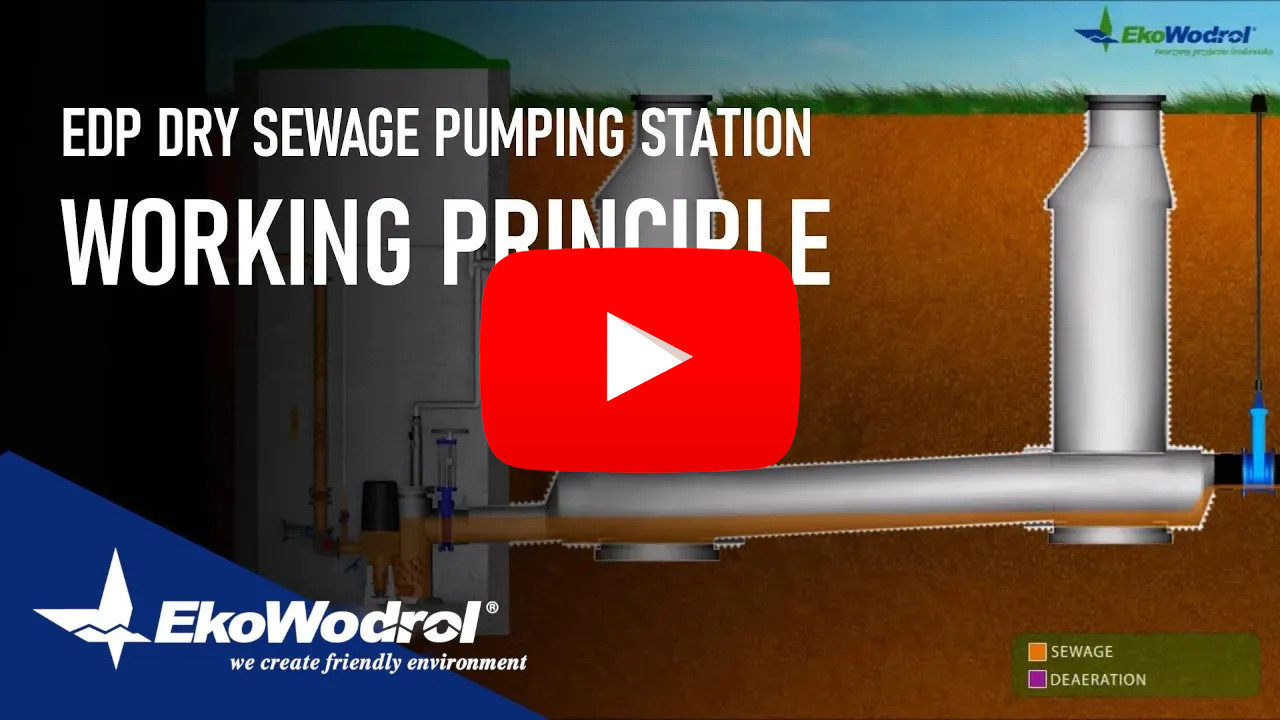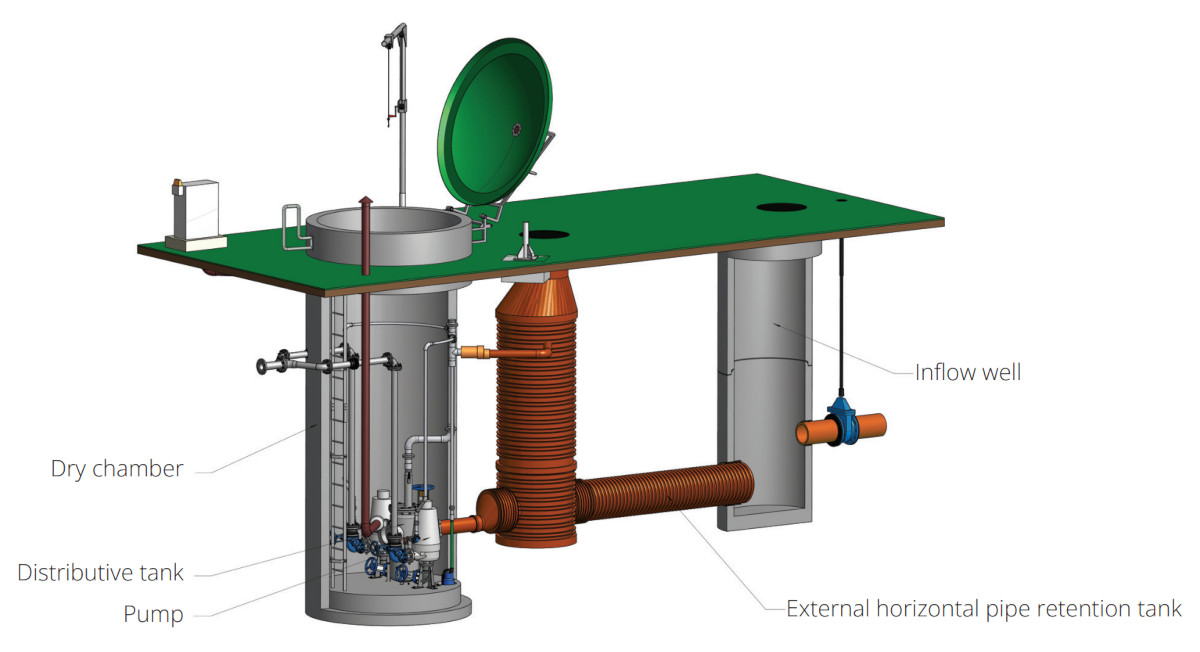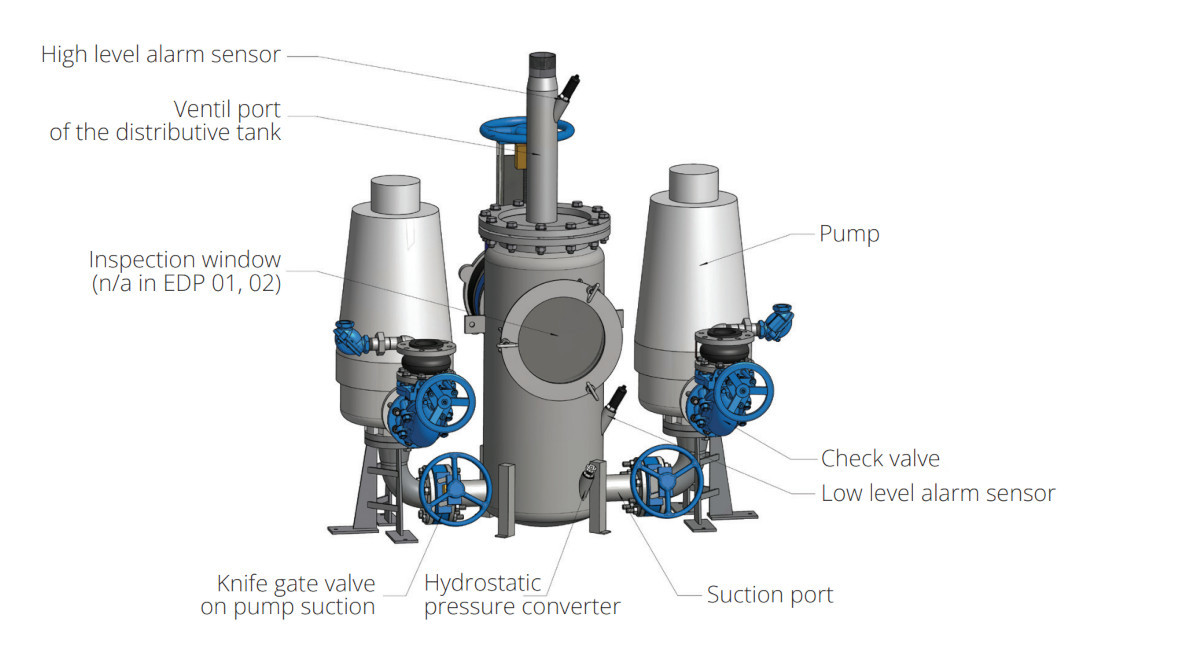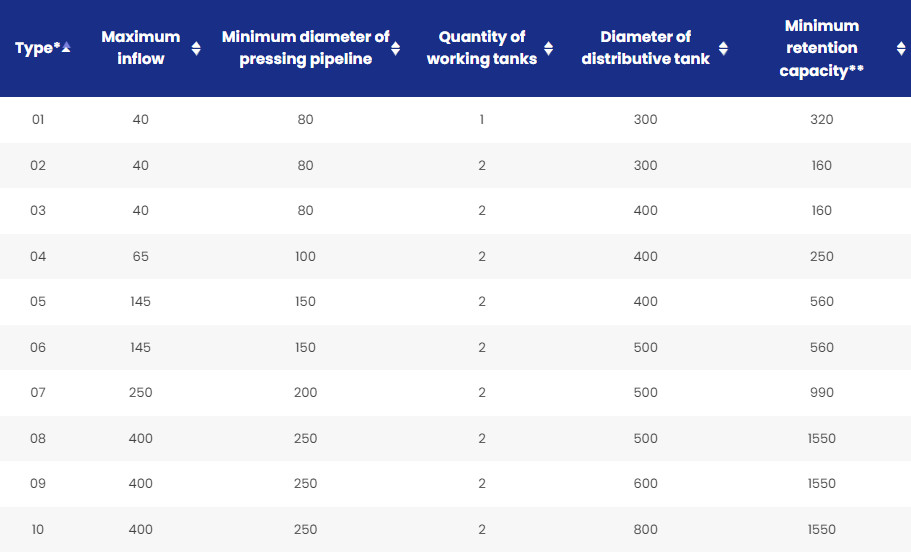Dry Pumping Station EDP
Compact device, which guarantee reliability and safe operation.
The dry sewage pumping station EkoWodrol is the solution with the growing popularity. Users emphasize the flexibility of our technology – the possibility of using pumps from any manufacturer, depending on preferences. EDP dry pumping station complying European regulation EN 12050-1. Our technology solves the current problems of odours.
The structure of an external pipe retention tank and a distributive tank provides the right amount of retention space for pumping sewage and reduces dead retention space minimizing odours.

Key features
1. SAVE TIME AND OPERATING COSTS
Thanks to the use of a horizontal tubular retention tank, fittings and pumps are protected against sudden discharge of sewage contaminated with solid parts, which means that the pumping station is not blocked. Additionally, the device makes it possible to cut off the system and carry out maintenance in hygienic conditions.
1. SAVE TIME AND OPERATING COSTS
Thanks to the use of a horizontal tubular retention tank, fittings and pumps are protected against sudden discharge of sewage contaminated with solid parts, which means that the pumping station is not blocked. Additionally, the device makes it possible to cut off the system and carry out maintenance in hygienic conditions.
2. SAFE AND HYGIENIC OPERATION
By placing the technological part of the pumping station in a dry chamber, employees do not have contact with sewage, thus avoiding the dangers related to, for example, poisoning with hydrogen sulphide. See the principle of operation of the EDP Dry Sewage Pumping Station.
2. SAFE AND HYGIENIC OPERATION
By placing the technological part of the pumping station in a dry chamber, employees do not have contact with sewage, thus avoiding the dangers related to, for example, poisoning with hydrogen sulphide. See the principle of operation of the EDP Dry Sewage Pumping Station.

3. GET RID OF COMPLAINTS FROM RESIDENTS
In the EDP dry pumping station, the dead space in the retention tank is maximally reduced, thus reducing odors to a minimum.
3. GET RID OF COMPLAINTS FROM RESIDENTS
In the EDP dry pumping station, the dead space in the retention tank is maximally reduced, thus reducing odors to a minimum.

Working principle
Technical details
The EDP dry pumping station consists of two main elements: an external pipe retention tank and a dry chamber (a technological part) with the fittings, pumps and control automation inside. An external pipe retention tank is designed to protect the pump from damage solids contained in the municipal wastewater. It works as a separator, where the larger solid parts are retained and dosed gradually to ensure the safety of the entire system. We recommend cleaning a pipe retention tank twice a year. Based on the opinions provided by Users, this can be done even less frequent.
✔ Pumping municipal or industrial sewage
✔ Pumping stations: main, zonal or local.
✔ Technological buildings with dry pump location.
✔ Comply with harmonized norms: PN-EN 12050-1, PN-EN 12050-2, PN-EN 12050-4.
✔ Comply with the requirements of the Regulation of the European Parliament and of the Council (EU) No. 305/2011.
✔ Possibility to use any manufacturer pumps.
Construction and description of operation
Sewage flows to the pumping station through the cascade well and the pipe storage tank. Sewage flowing to the pumping station is directed to the distributive tank, to which pump units are attached. Pump units are automatically and alternatively powered up once an adequate level of waste water has been reached in the distributive tank. This level is measured by hydrostatic pressure converter, in the case of failure – by high and low level alarm sensors. The hydrostatic pressure converter and alarm sensors are installed in the distributive tank and cooperate with the electric switchboard executing a predetermined control algorithm in the automatic operation system. With an intense inflow and when the power-up level of one of the pumps has been exceeded, the other pump is powered up. The capacity of the distributive tank as well as the output and the number of pump units are selected taking into account the quantity of sewage inflow. The whole dry sewage pumping station is installed in a dry chamber (prefabricated concrete or polymer concrete rings either plastic chambers), which allows a direct inspection of the correctness of the pumping station operation. It also facilitates the disassembly, replacement and the maintenance of its individual elements in hygienic conditions.
In comparison to traditional dry pumping stations the EDP dry pumping station eliminates the risk of the formation of so-called sewage sludge, which is gradually being distracted can result to pump damage.
Range of parameters
| Type* | Maximum inflow | Minimum diameter of pressing pipeline | Quantity of working tanks | Diameter of distributive tank | Minimum retention capacity** |
|---|---|---|---|---|---|
| EDP | [m3/h] | [mm] | [szt.] | [mm] | [l] |
| 01 | 40 | 80 | 1 | 300 | 320 |
| 02 | 40 | 80 | 2 | 300 | 160 |
| 03 | 40 | 80 | 2 | 400 | 160 |
| 04 | 65 | 100 | 2 | 400 | 250 |
| 05 | 145 | 150 | 2 | 400 | 560 |
| 06 | 145 | 150 | 2 | 500 | 560 |
| 07 | 250 | 200 | 2 | 500 | 990 |
| 08 | 400 | 250 | 2 | 500 | 1550 |
| 09 | 400 | 250 | 2 | 600 | 1550 |
| 10 | 400 | 250 | 2 | 800 | 1550 |
| 11 | 575 | 300 | 2 | 600 | 2230 |
| 12 | 575 | 300 | 2 | 800 | 2230 |
* The division of the types of EDP pumping stations results from the difference of parameters not visible in the table (e.g. head pressure) and adapted to a specific application.
** The minimum retention capacity is calculated according to the minimum pumps efficiency and the numbers of starts (no more than 10 cycles/hour) of a single pump. The specified capacity may be reduced when using pumps with higher possible numbers of cycles/hour and/or when inflow is less than maximum.
* The division of the types of EDP pumping stations results from the difference of parameters not visible in the table (e.g. head pressure) and adapted to a specific application.
** The minimum retention capacity is calculated according to the minimum pumps efficiency and the numbers of starts (no more than 10 cycles/hour) of a single pump. The specified capacity may be reduced when using pumps with higher possible numbers of cycles/hour and/or when inflow is less than maximum.
Want a free project?
As part of the FREE PROJECT, we will select and design a sewage pumping station, create a concept for BTS Saintary System Defender as well as EKON/EKOS columns.


